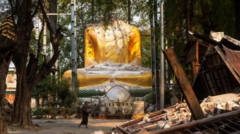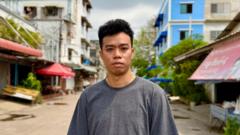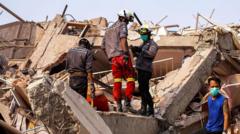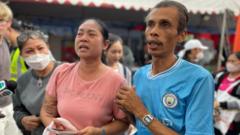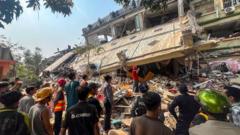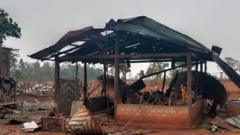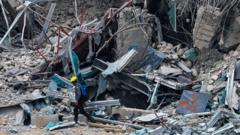In the wake of the deadliest earthquake in a century, Myanmar grapples with immense devastation, political unrest, and resistance from local rebel groups as humanitarian aid struggles to reach those in need.
Myanmar Faces Double Crisis: Earthquake Casualties and Ongoing Military Conflict

Myanmar Faces Double Crisis: Earthquake Casualties and Ongoing Military Conflict
A devastating earthquake has claimed over 1,600 lives in Myanmar, compounding the suffering in a country already ravaged by civil war and military airstrikes.
Empty Line 4
As Myanmar endure its most cataclysmic earthquake in over a hundred years, the nation is facing a dual crisis: the loss of life from the quake and the continuance of military airstrikes amid ongoing civil conflict. More than 1,600 fatalities have been confirmed, with over 3,000 injured as the situation continues to evolve. The epicenter of the disaster was near Mandalay, where an aftershock further destabilized structures that had previously endured the initial tremors, raising concerns about missing persons and survivors trapped beneath debris.
The political landscape complicates the aftermath, as the military junta continues its aggressive operations in civilian areas, leveraging airstrikes while the nation mourns. Prior to the quake, nearly 20 million individuals were already in dire need of humanitarian assistance due to a protracted civil war. Experts speculate this earthquake could shift the dynamics of the ongoing conflict. The Arakan Army, a formidable rebel faction, has made territorial gains and could capitalize on the chaos to further its objectives against the established military regime.
While international support is being mobilized, skepticism lingers over the military’s capacity to deliver aid effectively, given its history of weaponizing humanitarian efforts. As the survival window for many trapped survivors rapidly approaches closure, the urgency for coordinated and impartial aid becomes paramount in a land burdened by extraordinary strife.
As Myanmar endure its most cataclysmic earthquake in over a hundred years, the nation is facing a dual crisis: the loss of life from the quake and the continuance of military airstrikes amid ongoing civil conflict. More than 1,600 fatalities have been confirmed, with over 3,000 injured as the situation continues to evolve. The epicenter of the disaster was near Mandalay, where an aftershock further destabilized structures that had previously endured the initial tremors, raising concerns about missing persons and survivors trapped beneath debris.
The political landscape complicates the aftermath, as the military junta continues its aggressive operations in civilian areas, leveraging airstrikes while the nation mourns. Prior to the quake, nearly 20 million individuals were already in dire need of humanitarian assistance due to a protracted civil war. Experts speculate this earthquake could shift the dynamics of the ongoing conflict. The Arakan Army, a formidable rebel faction, has made territorial gains and could capitalize on the chaos to further its objectives against the established military regime.
While international support is being mobilized, skepticism lingers over the military’s capacity to deliver aid effectively, given its history of weaponizing humanitarian efforts. As the survival window for many trapped survivors rapidly approaches closure, the urgency for coordinated and impartial aid becomes paramount in a land burdened by extraordinary strife.


